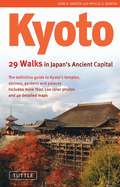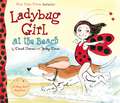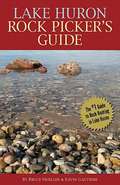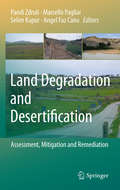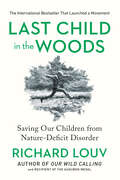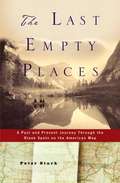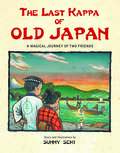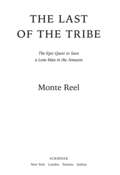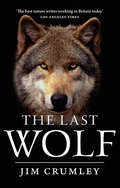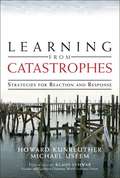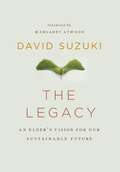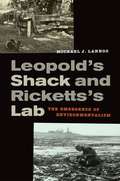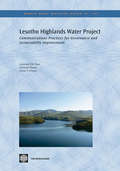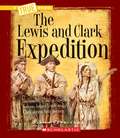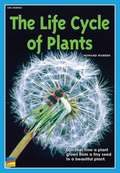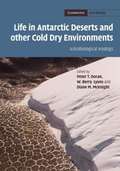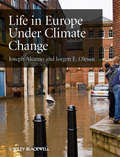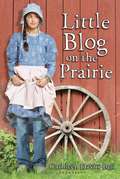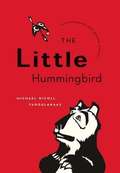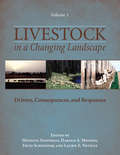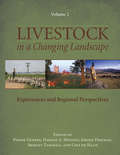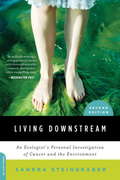- Table View
- List View
Kyoto
by John H. Martin Phyllis G. MartinKyoto is Japan's ancient capital and modern-day center of tourism and traditional culture. Founded nearly 1,300 years ago and undamaged by the war, Kyoto today is one of the world's most beautiful and historic cities, home to 17 World Heritage sites and over 2,000 temples and shrines.Kyoto presents 29 easy-to-follow walking tours through the city's 1,300 years of history, its many unique districts and scenic areas full of charm and character. This updated, greatly expanded guide features over 100 color photos, as well as approximately 40 brand new, full-color guide maps and diagrams of individual sites.
Ladybug Girl at the Beach (Ladybug Girl)
by Jacky DavisIt is preschooler Lulu’s first time at the beach and she needs to conquer her fear of the ocean in this hardcover picture book from the New York Times bestselling Ladybug Girl series. Lulu has never been to the beach but she knows she is going to love it…until she sees just how big and loud the ocean is. She and her dog Bingo decide that they will make sandcastles, fly kites, and get ice cream instead of swimming. But then the ocean waves snatch Lulu’s favorite pail. This is a job for Ladybug Girl! When Lulu is Ladybug Girl, she is brave and nothing can stop her from rescuing her pail – and suddenly she is in the ocean and it is fun! This story is the perfect preparation for a first beach vacation, or to explore a new experience with a preschooler. Mama and Papa are never far away while Ladybug Girl builds up her courage and confronts something scary for the first time. For fans of Fancy Nancy and Angelina Ballerina, the Ladybug Girl series honors courage, creativity, and a love of nature!
Lake Huron Rock Picker's Guide
by Kevin Gauthier Bruce MuellerBruce Mueller is owner of the C&M Rock Shop in Honor, Michigan. He holds a master's degree in geology from the University of Illinois. He is also the author of The Complete Guide to Petoskey Stones. Kevin Gauthier is a business graduate from Michigan State University and has completed courses through Gem Institute of America (GIA). He has spent a lifetime collecting, cutting, and polishing the gems found around Lake Huron. Kevin is co-author with Bruce Mueller of Lake Michigan Rock Picker's Guide and Lake Superior Rock Picker's Guide. He is owner of Korner Gem in Traverse City, Michigan: www. kornergem.com.
Land Degradation and Desertification: Assessment, Mitigation and Remediation
by Angel Faz Cano Marcello Pagliai Pandi Zdruli Selim KapurLand Degradation and Desertification: Assessment, Mitigation, and Remediation reports research results in sustainable land management and land degradation status and mitigation in 36 countries around the world. It includes background papers with continental and international perspectives dealing with land degradation and desertification studies. The book assembles various topics of interest for a large audience. They include carbon sequestration and stocks, modern techniques to trace the trends of land degradation, traditional and modern approaches of resource-base conservation, soil fertility management, reforestation, rangeland rehabilitation, land use planning, GIS techniques in desertification risk cartography, participatory ecosystem management, policy analyses and possible plans for action. Various climatic domains in Africa, Asia, Europe and The Americas are covered. The book will be of interest to a variety of environmental scientists, agronomists, national and international policy makers and a number of organizations dealing with sustainable management of natural resources.
Last Child in the Woods: Saving Our Children From Nature-Deficit Disorder
by Richard Louv“The children and nature movement is fueled by this fundamental idea: the child in nature is an endangered species, and the health of children and the health of the Earth are inseparable.” —Richard Louv, from the new edition In his landmark work Last Child in the Woods, Richard Louv brought together cutting-edge studies that pointed to direct exposure to nature as essential for a child’s healthy physical and emotional development. Now this new edition updates the growing body of evidence linking the lack of nature in children’s lives and the rise in obesity, attention disorders, and depression. Louv’s message has galvanized an international back-to-nature campaign to “Leave No Child Inside.” His book will change the way you think about our future and the future of our children. “[The] national movement to ‘leave no child inside’ . . . has been the focus of Capitol Hill hearings, state legislative action, grass-roots projects, a U.S. Forest Service initiative to get more children into the woods and a national effort to promote a ‘green hour’ in each day. . . . The increased activism has been partly inspired by a best-selling book, Last Child in the Woods, and its author, Richard Louv.” —The Washington Post “Last Child in the Woods, which describes a generation so plugged into electronic diversions that it has lost its connection to the natural world, is helping drive a movement quickly flourishing across the nation.” —The Nation’s Health “This book is an absolute must-read for parents.” —The Boston Globe Now includesA Field Guide with 100 Practical Actions We Can Take Discussion Points for Book Groups, Classrooms, and Communities Additional Notes by the Author New and Updated Research from the U.S. and Abroad
The Last Empty Places: A Past and Present Journey through the Blank Spots on the American Map
by Peter StarkFor readers of both travel and history, Stark explores the blank spots on the U. S. map, weaving together riveting American history, a wonderful contemporary travelogue, and a deeply engaging examination of the history of wilderness.
The Last Kappa of Old Japan
by Sunny SekiThe Last Kappa of Old Japan is a warmly written and beautifully illustrated book that introduces many aspects of traditional Japanese culture and folklore, while teaching an important lesson about environmentalism. The story is of a young Japanese farm boy who develops a friendship with the mythical Kappa creature, a messenger of the god of water. The tale begins in post-Modern Japan when the boy is young and ends with him as an adult in desperate need of the Kappa's help. A story of love, friendship, and adventure, readers of all ages will enjoy this picture book by award-winning author/illustrator, Sunny Seki.
The Last of the Tribe
by Monte ReelThroughout the centuries, the Amazon has yielded many of its secrets, but it still holds a few great mysteries. In 1996 experts got their first glimpse of one: a lone Indian, a tribe of one, hidden in the forests of southwestern Brazil. Previously uncontacted tribes are extremely rare, but a one-man tribe was unprecedented. And like all of the isolated tribes in the Amazonian frontier, he was in danger. Resentment of Indians can run high among settlers, and the consequences can be fatal. The discovery of the Indian prevented local ranchers from seizing his land, and led a small group of men who believed that he was the last of a murdered tribe to dedicate themselves to protecting him. These men worked for the government, overseeing indigenous interests in an odd job that was part Indiana Jones, part social worker, and were among the most experienced adventurers in the Amazon. They were a motley crew that included a rebel who spent more than a decade living with a tribe, a young man who left home to work in the forest at age fourteen, and an old-school sertanista with a collection of tall tales amassed over five decades of jungle exploration. Their quest would prove far more difficult than any of them could imagine. Over the course of a decade, the struggle to save the Indian and his land would pit them against businessmen, politicians, and even the Indian himself, a man resolved to keep the outside world at bay at any cost. It would take them into the furthest reaches of the forest and to the halls of Brazil's Congress, threatening their jobs and even their lives. Ensuring the future of the Indian and his land would lead straight to the heart of the conflict over the Amazon itself. A heart-pounding modern-day adventure set in one of the world's last truly wild places, The Last of the Tribe is a riveting, brilliantly told tale of encountering the unknown and the unfathomable, and the value of preserving it.
The Last Wolf
by Jim CrumleyAn elegant and imaginative account that readdresses the place of the wolf in modern Scotland from &“the best nature writer working in Britain today&” (Los Angeles Times Book Review). In The Last Wolf, Jim Crumley explores the place of the wolf in Scotland—past, present and future—and challenges many of the myths that have been regarded for centuries as biological fact. Bringing to bear a lifetime&’s immersion in his native landscape and more than twenty years as a professional nature writer, Crumley questions much of the written evidence on the plight of the wolf in light of contemporary knowledge and considers the wolf in today&’s world, an examination that ranges from Highland Scotland to Devon and from Yellowstone in North America to Norway and Italy, as he pursues a more considered portrait of the animal than the history books have previously offered. Within the narrative, Crumley also examines the extraordinary phenomenon of wolf reintroductions physically transforming the landscapes in which they live; that even the very colors of the land change under the influence of teeming grasses, flowers, trees, butterflies, birds, and mammals that flourish in their company. Crumley makes the case for their reintroduction into Scotland with all the passion and poetic fervor that has become the hallmark of his writing over the years.&“Jim Crumley&’s task is to persuade the human beings of the Highlands that all of our lives would be richer in the presence of wolves. It is, as he acknowledges, a difficult task. If everybody in Scotland was to read The Last Wolf it would become immeasurably easier.&” —Roger Hutchinson, author of The Butcher, the Baker, the Candle-Stick Maker
Learning from Catastrophes: Strategies for Reaction and Response
by Howard Kunreuther Michael UseemBreakthrough, business-focused techniques for managing the growing risks of catastrophe, from world's leading experts--Indispensable 'extreme risks' guidance for decision-makers in a world that is becoming increasingly unstable. -Powerful assessment models, decision-making techniques, and best practices for building resilience into any organization, public or private. -Edited by the leading experts who recently introduced influential new techniques for managing extreme risks at the World Economic Forum. Events ranging from Hurricane Katrina to the global economic crisis have taught businesspeople an unforgettable lesson: if you don't plan for 'extreme risk,' you endanger your organization's very survival. But how can you plan for events that go far beyond anything that occurs in normal day-to-day business? In Learning from Catastrophes, two renowned experts present the first comprehensive strategic framework for assessing, responding to, and managing extreme risk. Howard Kunreuther and Michael Useem build on their own breakthrough work on mitigating natural disasters, extending it to the challenges faced by real-world enterprises. Along with the contributions of leading experts in risk management, heuristics, and disaster recovery, they identify the behavioral biases and faulty heuristics that mislead decision makers about the likelihood of catastrophe. They go on to identify the hidden links associated with extreme risks, and present techniques for systematically building greater resilience into the organization. The global best-seller The Black Swan told executives that 'once in a lifetime' events are far more common and dangerous than they ever realized. Learning from Catastrophe shows them exactly what to do about it.
The Legacy
by Margaret Atwood David SuzukiIn this expanded version of an inspiring speech delivered in December 2009, David Suzuki reflects on how we got where we are today and presents his vision for a better future. In his living memory, Suzuki has witnessed cataclysmic changes in society and our relationship with the planet: the doubling of the world's population, our increased ecological footprint, and massive technological growth.Today we are in a state of crisis, and we must join together to respond to that crisis. If we do so, Suzuki envisions a future in which we understand that we are the Earth and live accordingly. All it takes is imagination and a determination to live within our, and the planet's, means. This book is the culmination of David Suzuki's amazing life and all of his knowledge, experience, and passion - it is his legacy.
The Legal Dimensions of Oil and Gas in Iraq
by Rex J. ZedalisThis volume presents the first and only comprehensive examination of the legal issues surrounding international debt recovery on claims against Iraqi oil and gas. In addition to presenting a snapshot view of Iraq's outstanding debt obligations and an analysis of the significance of the theory of odious debt in the context of the Iraqi situation, the list of legal issues examined includes relevant provisions of the Iraqi Constitution of 2005, controlling Security Council resolutions, pertinent articles of the KRG oil and gas law (No. 22) of 2007 and the many nuanced and technical questions raised thereby, legal pronouncements aimed at protecting Iraqi oil and gas and those adopted in selected other nations, and general problems associated with recognition and enforcement of awards or judgments that may involve such oil and gas or revenues from the sale thereof. Also discussed are the lessons learned by the handling of the Iraq debt experience and the transferability of those lessons to future situations in which resource-rich nations may have outstanding financial obligations to other members of the world community or their nationals.
Leopold’s Shack and Ricketts’s Lab: The Emergence of Environmentalism
by Michael J. LannooAldo Leopold and Ed Ricketts are giants in the history of environmental awareness. This illuminating book reveals the full extent of their profound and parallel influence both on science and our perception of natural world today.
Lesotho Highlands Water Project: Communication Practices for Governance and Sustainability Improvement
by Leonardo Mazzei Lawrence J. M. Haas Donal O'LearyThis paper considers the multi-faceted lessons of the Lesotho Highlands Water Project and how the project can serve as a model of mutually beneficial development, though demonstrating the benefits of a bilateral governmental cooperative approach in the development of an international river. These benefits include exceeding the impact of individual national approaches and strengthening political cooperation among all participants. This model is particularly relevant since approximately 40 percent of the world's population lives in transboundary river basins and more than 90 percent of the world's population lives within countries that share these basins.
The Lewis And Clark Expedition (True Books: Westward Expansion)
by John PerritanoComprehensive text about the Lewis and Clark expedition in the Louisiana territory in preparation for the Louisiana Purchase.
Lieutenant Fury: a brilliantly engaging and rip-roaring naval adventure set during the French Revolutionary Wars that will keep you hooked!
by G.S. BeardIf you like Hornblower and Sharpe, you will love this all-action nautical page-turner from much loved author G.S.Beard. You'll feel as if you are in the midst of the action!'If you like sea stories, you will enjoy this, and even if you think you don't but enjoy things like Sharpe, it might just convert you' - HISTORICAL NOVELS REVIEW'Kept me spellbound' -- ***** Reader review'A fun, fast read' -- ***** Reader review'Excellent story and very exciting' -- ***** Reader review*************************************************************1793: the French Revolutionary Wars continue...When HMS Amazon is returning from an arduous duty in the Indian Ocean, she encounters a French frigate in the Atlantic which unexpectedly opens fire - a bloody sea battle ensues resulting in both triumph and personal tragedy for Acting Lieutenant John Fury.A battered Amazon puts into Gibraltar for repairs and newly promoted Fury finds he is to be transferred away from his home on the Amazon and set a new challenge: he will be the fifth lieutenant on the 74-gun-man of war Fortitude.The action never stops in Toulon, where Fury is posted and he eventually finds himself defending a prominent fort ashore as the Republican armies, inspired by a young artillery officer by the name of Napoleon Bonaparte, establish a brutal siege of the port. It is soon clear that Britain and her allies are going to be hard pressed to hold onto their prize.But Fury has more to lose than most - in the maelstrom of the siege he has met and fallen in love with a pretty French girl, Sophie Gourrier.Somehow, as the defence crumbles, he must rescue his men and Sophie from the doomed city.John Fury's adventures started in Mr Midshipman Fury - have you read it?
The Life Cycle of Plants
by Howard WarrenPerform this script about a girl's quest to save the buffalo from extinction.
Life in Antarctic Deserts and Other Cold Dry Environments
by Peter T. Doran W. Berry Lyons Diane M. Mcknight"The McMurdo Dry Valleys form the largest relatively ice-free area on the Antarctic continent. The perennially ice-covered lakes, ephemeral streams and extensive areas of exposed soil are subject to low temperatures, limited precipitation and salt accumulation. The dry valleys thus represent a region where life approaches its environmental limits. This unique ecosystem has been studied for several decades as an analog to environments on other planets, particularly Mars. For the first time, the detailed terrestrial research of the dry valleys is brought together here, presented from an astrobiological perspective. Chapters include a discussion on the history of research in the valleys, a geological background of the valleys, setting them up as analogs for Mars, followed by chapters on the various sub-environments in the valleys such as lakes, glaciers and soils. Includes concluding chapters on biodiversity and other analog environments on Earth"--Provided by publisher.
Life in Europe Under Climate Change
by Joseph Alcamo Jorgen E. OlesenLife in Europe will indeed go on as the climate changes, but not in the same way as before. The air will be warmer, winds will change, patterns of rainfall and snowfall will alter, and sea level is likely to rise. These phenomena are already being seen. Europe will in the future experience marked changes in vegetation cover, increased floods along rivers and coastlines as well as more frequent droughts and forest fires, often leading to large societal costs. The changes will be minor in some cases, profound in others, but in any case, pervasive. This book uses the most up to date information issued by the IPCC (Intergovernmental Panel on Climate Change), and informs readers about these effects, as well as showing how Europe is contributing to attempts to slow the tempo of global climate change, and how it can adapt to the climate change that seems unavoidable. Life in Europe under Climate Change makes essential information on climate impacts in Europe accessible to a broad audience, including students, politicians, planners and members of non-governmental organizations.
A Life in Shadow
by Stephen BellFrench naturalist and medical doctor Aimé Bonpland (1773-1858) was one of the most important scientific explorers of South America in the early nineteenth century. From 1799 to 1804, he worked alongside Alexander von Humboldt as the latter carried out his celebrated research in northern South America, but he later returned to conduct his own research farther south. A Life in Shadowaccounts for the entire span of Bonpland's remarkable and diverse career in South America-in Argentina, Paraguay (where he was imprisoned for nearly a decade), Uruguay, and southernmost Brazil-based on extensive archival material. The study reconnects Bonpland's divided records in Europe and South America and delves into his studies of rural resources in interior regions of South America, including experimental cultivation techniques. This is a fascinating account of a man-a doctor, farmer, rancher, scientific explorer, and political conspirator-who interacted in many revealing ways with the evolving societies and institutions of South America.
Little Blog on the Prairie
by Cathleen Davitt BellThirteen-year-old Genevieve's summer at a frontier family history camp in Laramie, Wyoming, with her parents and brother is filled with surprises, which she reports to friends back home on the cell phone she sneaked in, and which they turn into a blog.
The Little Hummingbird
by Michael Nicoll YahgulanaasThis children's book is based on a South American indigenous story about a courageous hummingbird who defies fear and expectations in her attempt to save the forest from fire. The story is supplemented by a natural and cultural history of hummingbirds, as well as an inspiring message. The Artist complements this optimistic tale that encourages everyone to take responsibility for their home and the planet.
Livestock in a Changing Landscape, Volume 1: Drivers, Consequences, and Responses
by Harold A. Mooney Henning Steinfeld Laurie E. Neville Fritz SchneiderThe rapidly changing nature of animal production systems, especially increasing intensification and globalization, is playing out in complex ways around the world. Over the last century, livestock keeping evolved from a means of harnessing marginal resources to produce items for local consumption to a key component of global food chains. Livestock in a Changing Landscape offers a comprehensive examination of these important and far-reaching trends. The books are an outgrowth of a collaborative effort involving international nongovernmental organizations including the United Nations Food and Agriculture Organization (UN FAO), the International Livestock Research Institute (ILRI), the Swiss College of Agriculture (SHL), the French Agricultural Research Centre for International Development (CIRAD), and the Scientific Committee for Problems of the Environment (SCOPE). Volume 1 examines the forces shaping change in livestock production and management; the resulting impacts on landscapes, land use, and social systems; and potential policy and management responses. Volume 2 explores needs and draws experience from region-specific contexts and detailed case studies. The case studies describe how drivers and consequences of change play out in specific geographical areas, and how public and private responses are shaped and implemented. Together, the volumes present new, sustainable approaches to the challenges created by fundamental shifts in livestock management and production, and represent an essential resource for policy makers, industry managers, and academics involved with this issue.
Livestock in a Changing Landscape, Volume 2: Experiences and Regional Perspectives
by Harold A. Mooney Jeroen Dijkman Pierre Gerber Shirley Tarawali Cees De HaanThe rapidly changing nature of animal production systems, especially increasing intensification and globalization, is playing out in complex ways around the world. Over the last century, livestock keeping evolved from a means of harnessing marginal resources to produce items for local consumption to a key component of global food chains. Livestock in a Changing Landscape offers a comprehensive examination of these important and far-reaching trends. The books are an outgrowth of a collaborative effort involving international nongovernmental organizations including the United Nations Food and Agriculture Organization (UN FAO), the International Livestock Research Institute (ILRI), the Swiss College of Agriculture (SHL), the French Agricultural Research Centre for International Development (CIRAD), and the Scientific Committee for Problems of the Environment (SCOPE). Volume 1 examines the forces shaping change in livestock production and management; the resulting impacts on landscapes, land use, and social systems; and potential policy and management responses. Volume 2 explores needs and draws experience from region-specific contexts and detailed case studies. The case studies describe how drivers and consequences of change play out in specific geographical areas, and how public and private responses are shaped and implemented. Together, the volumes present new, sustainable approaches to the challenges created by fundamental shifts in livestock management and production, and represent an essential resource for policy makers, industry managers, and academics involved with this issue
Living Downstream: An Ecologist's Personal Investigation of Cancer and the Environment
by Sandra SteingraberThe first edition of Living Downstream-an exquisite blend of precise science and engaging narrative-set a new standard for scientific writing. Poet, biologist, and cancer survivor, Steingraber uses all three kinds of experience to investigate the links between cancer and environmental toxins.The updated science in this exciting new edition strengthens the case for banning poisons now pervasive in our air, our food, and our bodies. Because synthetic chemicals linked to cancer come mostly from petroleum and coal, Steingraber shows that investing in green energy also helps prevent cancer. Saving the planet becomes a matter of saving ourselves and an issue of human rights. A documentary film based on the book will coincide with publication.
